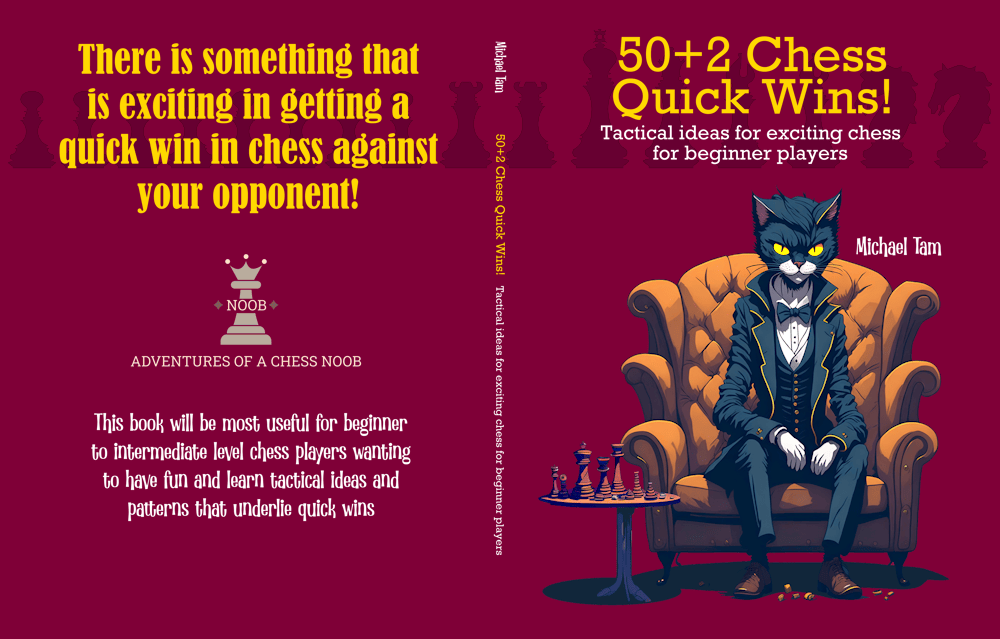
Tactics: Bishop deflects king from queen | 50+2 Chess Quick Wins! Book
#tactics #quickwins
50+2 Chess Quick Wins: Tactical ideas for exciting chess for beginner players. Buy on Amazon! US | CA | UK | DE | FR | IT | ES | NL | AU
My book, "50+2 Chess Quick Wins: Tactical ideas for exciting chess for beginner players" was published and released on Amazon in October 2023. This is the third video and article of a series that will cover the first section of the book, that explains tactical ideas and themes that underlie many quick win games!
In the previous article, “Tactics: Bishop + Queen f-pawn attack”, the tactic arose from the unique weakness of the f-pawn at the beginning of the game - that it is only defended by the king. The king is not a good defender due to the forcing conditions of check - a player cannot end their turn with their king directly under attack by an opponent's piece.
There is one other piece that is also only defended by the king at the beginning of the game, the queen! This also creates a potential tactical pattern that can result in a quick win by winning the opponent's queen, though, it occurs rather less frequently.
The tactic is potentially available when there is a fully open d-file, and the queens “see each other”. The tactic is possible due to the following notable facts at the opening stages of chess:
- The queen is only defended by the king.
- The f-pawn is only defended by the king.
- A player must respond to check, either by moving the king out of check, blocking the check, or by capturing the checking piece.
At the opening stages of a game, both Black’s queen and f-pawn are only defended by the king. As the f-pawn and queen are not on adjacent squares to each other, we could exploit this fact tactically if we can launch an attack on Black’s queen and f-pawn simultaneously. Simply, the king cannot defend both at the same time. If Black is forced to prioritise the f-pawn, for instance, the king is in check, then the king will be deflected away from the defence of the queen.
Example 1 - Englund Gambit Accepted
Example 2 - Stafford Gambit line



